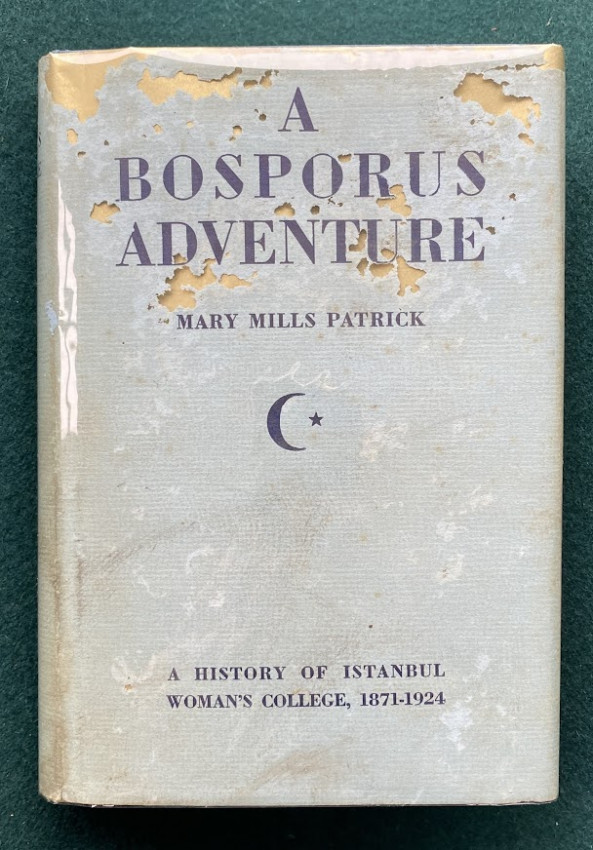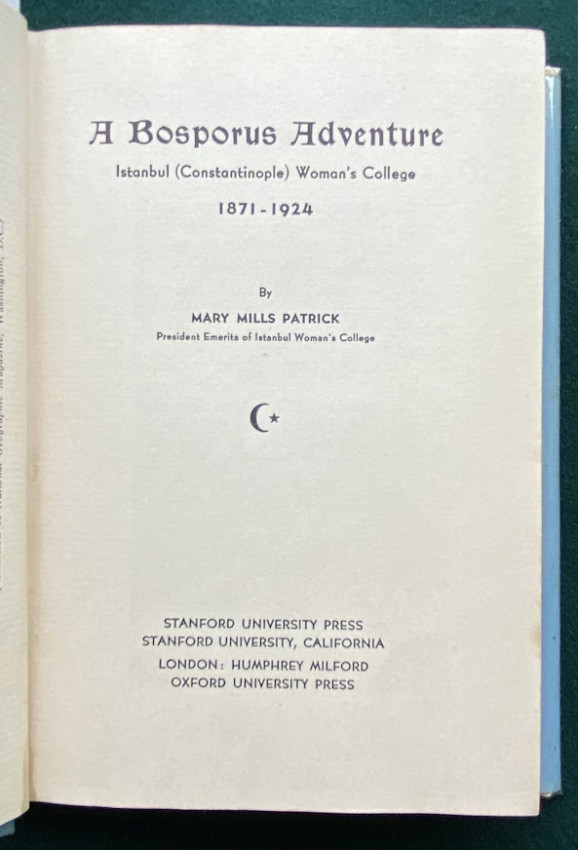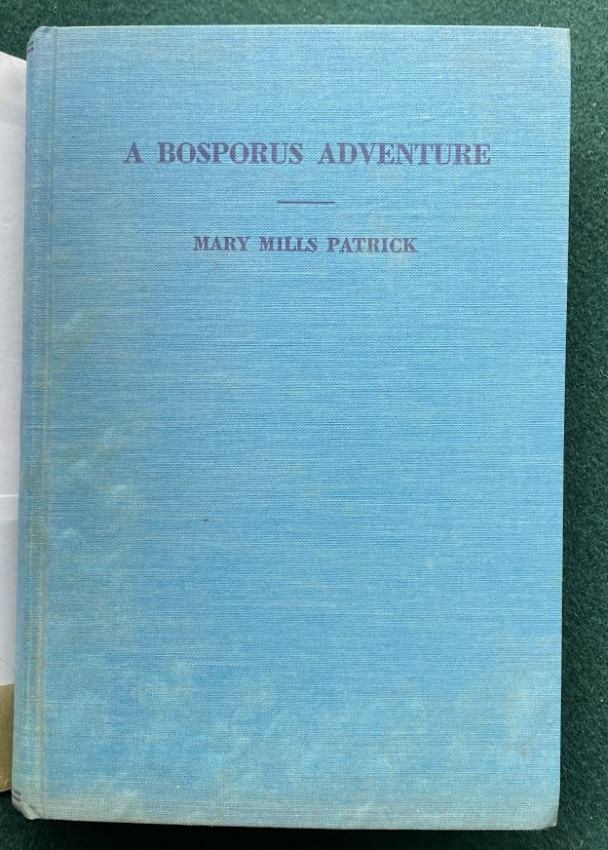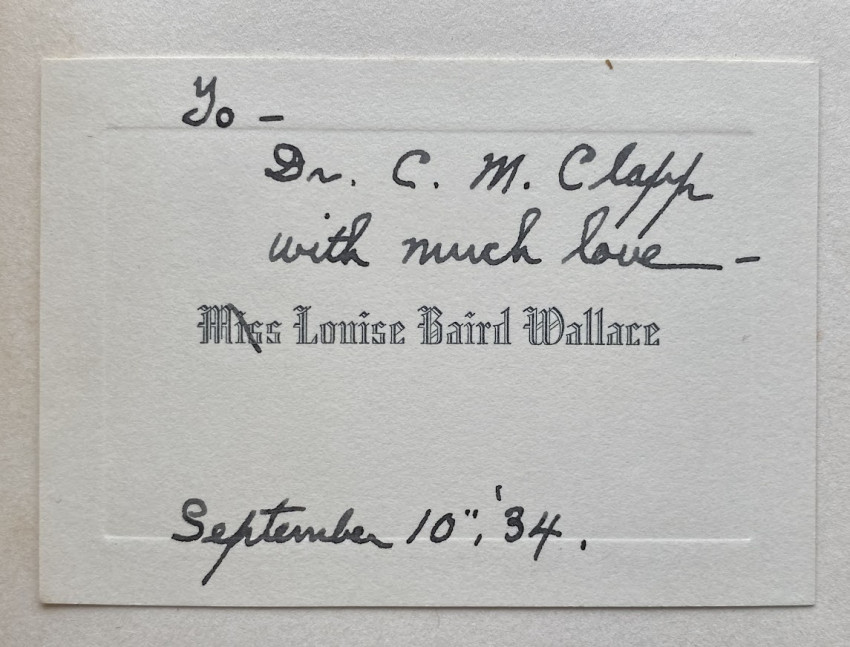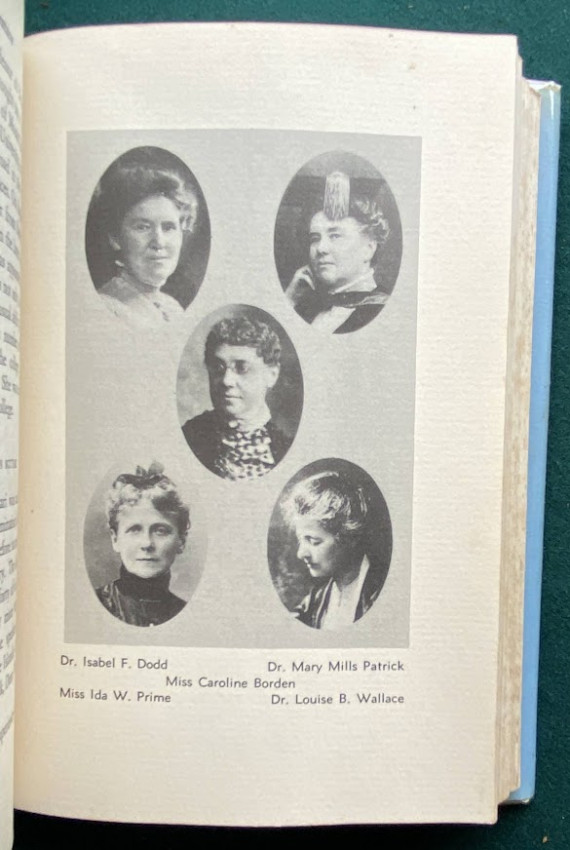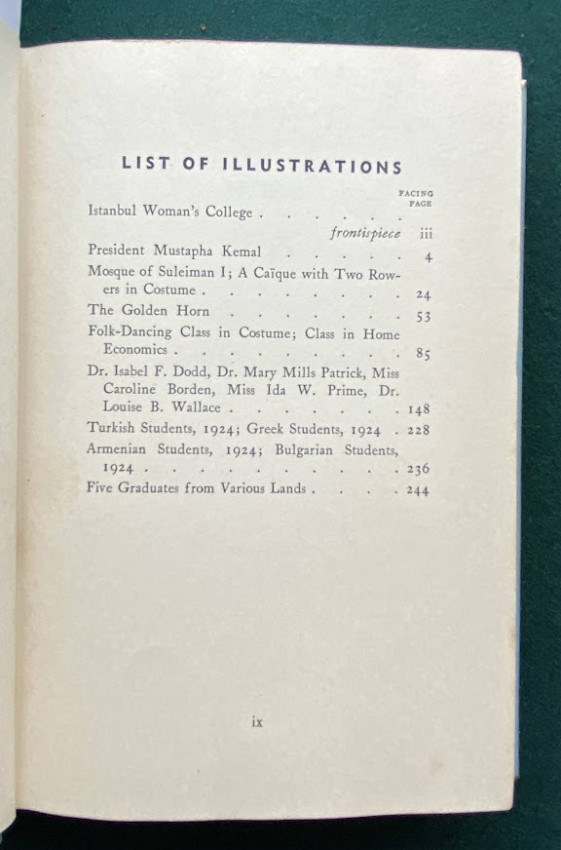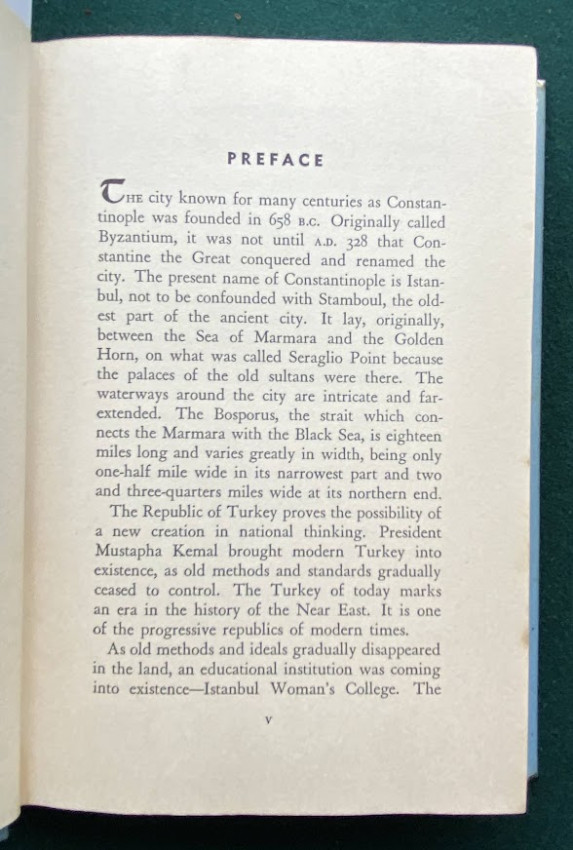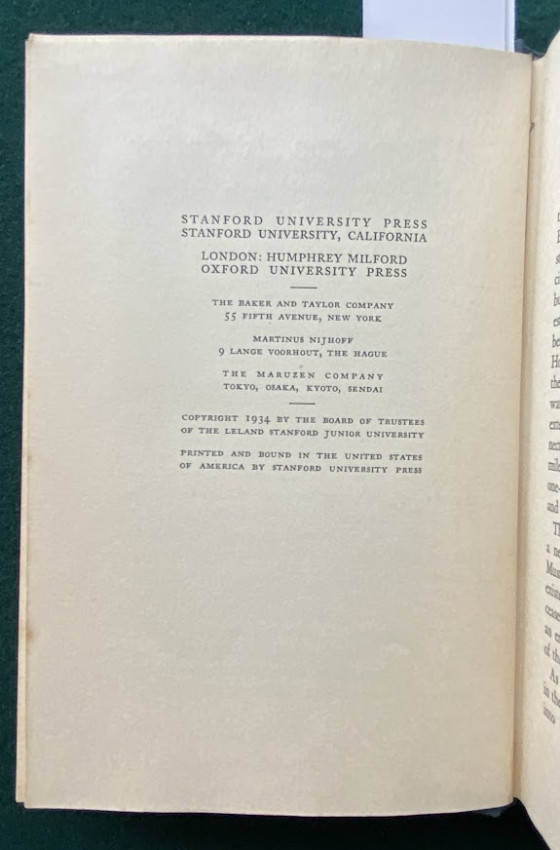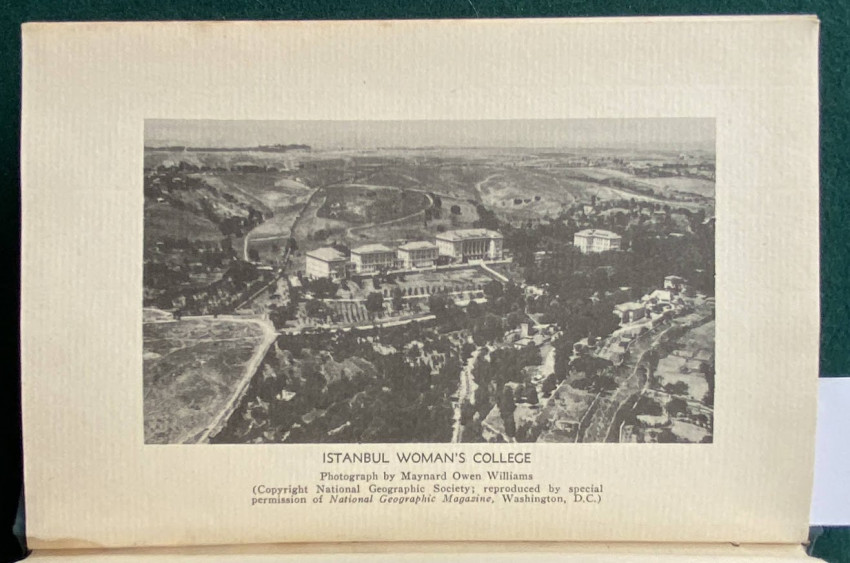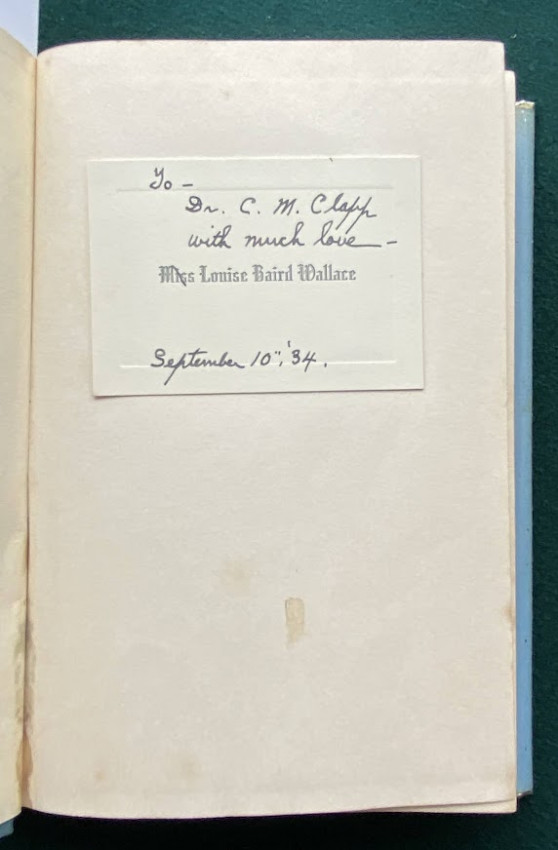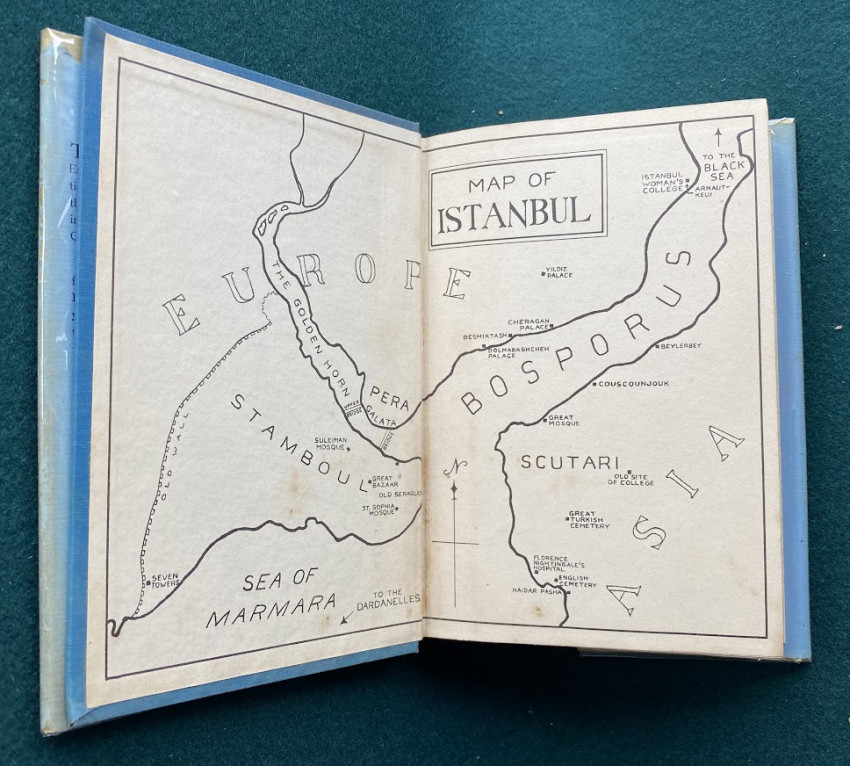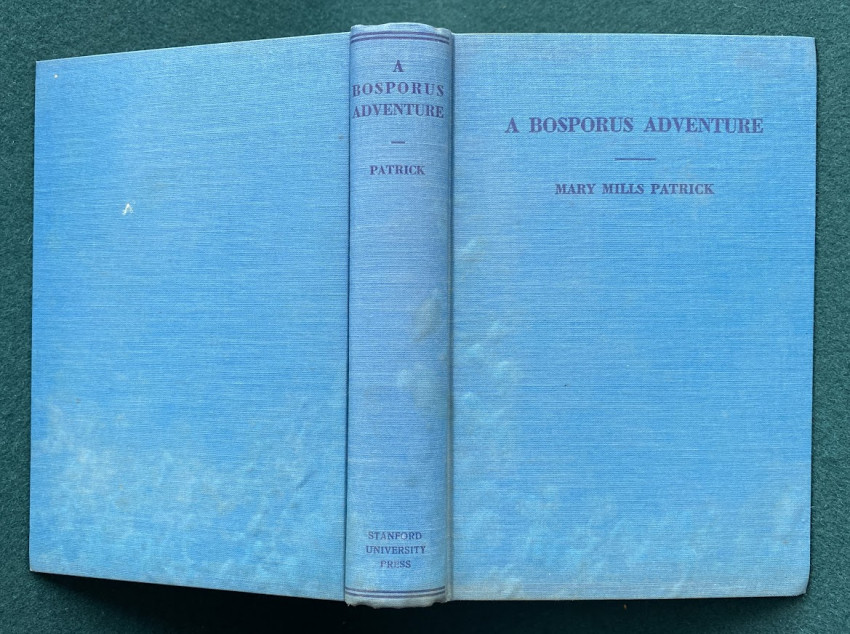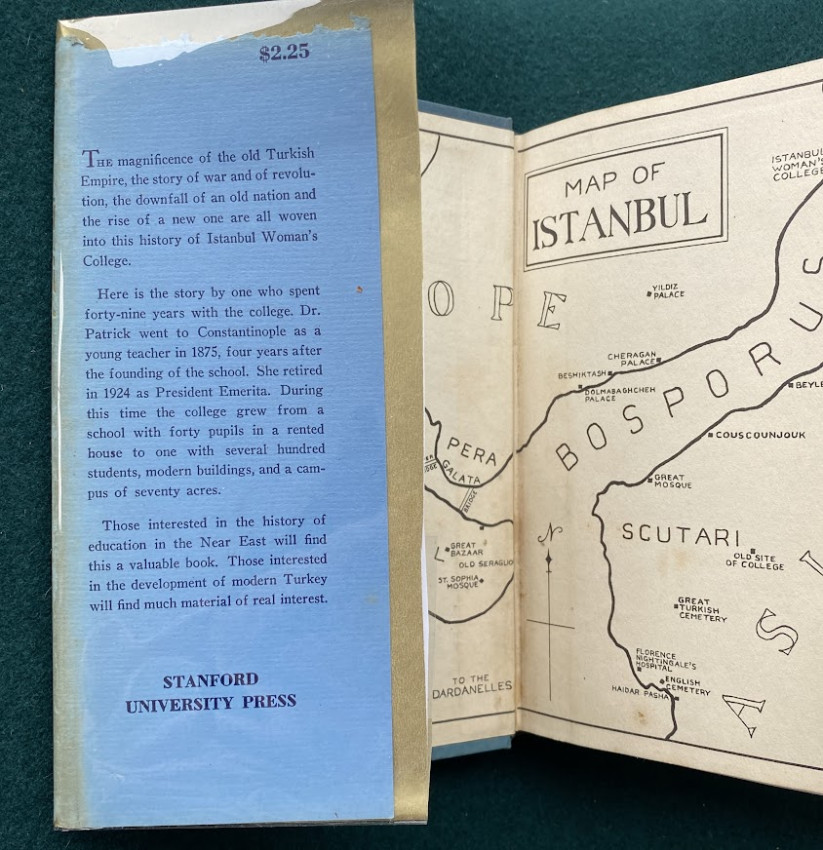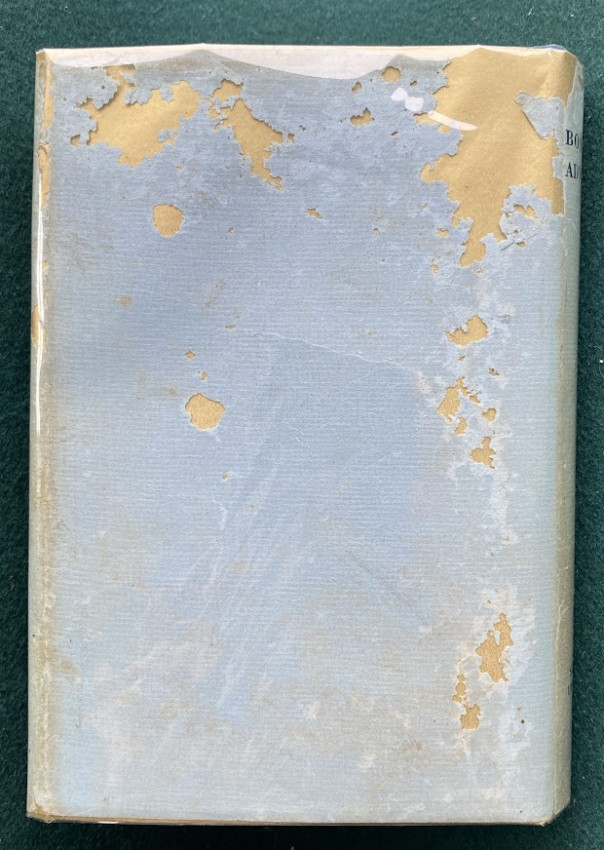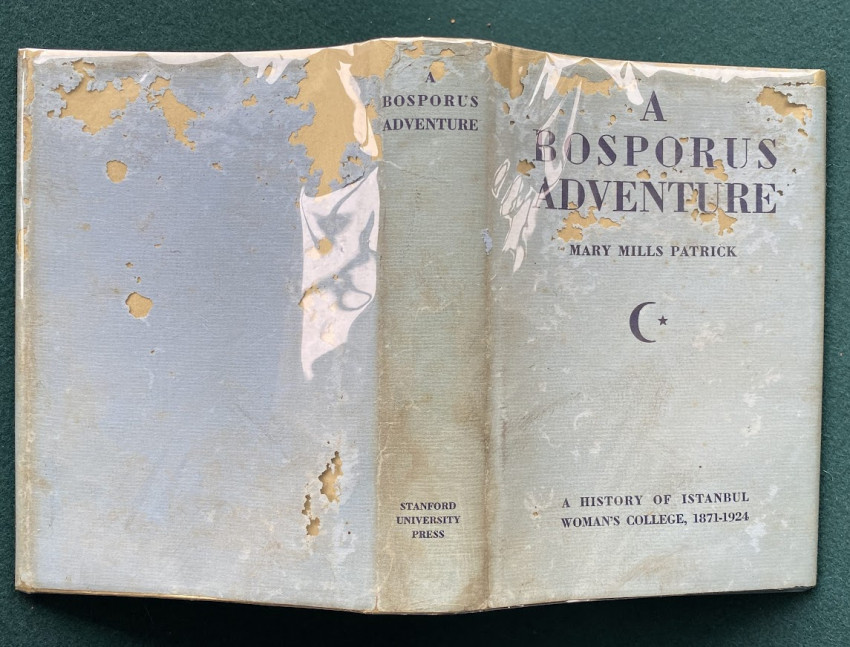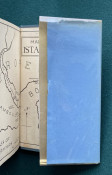Dr. Mary Mills PATRICK (1850-1940). A Bosphorus Adventure. Istanbul (Constantinople) Woman’s College 1871-1924. Stanford, Ca.: Stanford University Press, and the O.U.P. in London, [1934]. Small octavo (6 5/8 x 4 3/8 inches; 168 x 111 mm). Pp. [i-]v-ix[-x; 1-]3-284. Frontispiece and 8 plates. (The plate facing p. 244 with some loss to the upper and outer blank margins). Original mid-blue cloth, lettered in dark blue on upper cover and spine, front and rear endpapers display a "Map of Istanbul", original dust-jacket (old dampstaining and bubbling to cloth covers [see images], some silverfish damage to dust-jacket [see images]).Provenance: Dr. Cornelia Maria Clapp (1849 – 1934, inscribed presentation card from Dr. Louise B. Wallace of the Istanbul Women’s College, pasted to a front free endpaper.
Female education in the Islamic world: a presentation copy of a work describing the evolution of an institution and an individual.
Mary Mills Patrick’s Constantinople Woman’s College was one of the most influential institutions of higher learning for women in the Middle East in the last decades of the Ottoman Empire. Patrick arrived in the 1870s to evangelize, but she gradually distanced herself from Christian proselytism in order to create a “cosmopolitan” college for all Ottoman women. Patrick was president of the Constantinople Woman’s College for 34 years, protecting the institution through the Balkan Wars, World War One, the British occupation of Constantinople, the demise of the Ottoman Empire, and the founding of the Turkish Republic. Just as the late Ottoman Empire underwent extraordinary changes, so did Patrick transform herself and the Constantinople College to meet the demands of a twentieth-century Muslim state, ultimately sacrificing her “cosmopolitan,” heterogeneous student body to an ethnically homogeneous one that reflected the newly racialized nationalism of the Turkish Republic.
Dr. Louise B. Wallace, former Dean and Vice-President: “The crowning event of the delightful educational experience of that period was the securing of Dr. … Wallace as a member of our faculty . Her first appointment was as Professor of Biology, a department which she later brought up to a high standard. She was a graduate of Mount Holyoke College, had a Ph.D. from the University of Penn- sylvania, and had studied abroad in the Naples Zoological Station and other places. On August 20, 1912, she and I [Dr. Patrick] sailed together from Boston, en route for Constantinople, and in the latter part of the same academic year she was appointed Dean of the College. Dr. Wallace was not only a scholar but also an administrator of unusual ability, whose courage and keen judgment a number of years later were destined to save the college at the moment of its greatest danger. She was later appointed vice-president of the College. “ (Dr. Patrick. A Bosphorus Adventure, pp. 147-148).
Cornelia Maria Clapp (March 17, 1849 - December 31, 1934) was an American zoologist and academic specializing in marine biology. Born in Montague, Massachusetts, Clapp was educated at Mount Holyoke Seminary, the forerunner of today’s Mount Holyoke College, and graduated in 1871. She spent a year as a Latin teacher at an Andalusia, Pennsylvania boarding school before returning to Mount Holyoke to join the faculty. She taught mathematics and zoology, and also created a manual of exercises for the school’s gymnastics courses. Clapp continued her postgraduate studies at Louis Agassiz’s Anderson School of Natural History on Penikese Island off Massachusetts in 1874. She later attended Syracuse University, earning a PhB degree in 1881 and a PhD in 1882. She earned a second PhD from the University of Chicago in 1896. Beginning in 1888, Clapp was affiliated with the Marine Biological Laboratory at Woods Hole, Massachusetts, where she conducted laboratory research and later became a lecturer and a trustee. Her doctoral dissertation on toadfish was published in the Journal of Morphology in 1889. Although she was primarily known as an educator and did not author many scientific research papers, she was named in 1906 as being among the 150 most prominent zoologists in the U.S. by the journal American Man of Science. Mount Holyoke’s Cornelia Clapp Laboratory, built in 1924 to house the school’s biology classes, was named in her honor
- Sold By: Shadowrock Rare Books
- Contact Person: Adam Langlands
- Country: United States
- Email: [email protected]
- Telephone: 001-860-248-1547
- Preferred Payment Methods: Paypal, US$ checks and wire transfers, major credit cards through paypal
- Trade Associations: AA Approved


